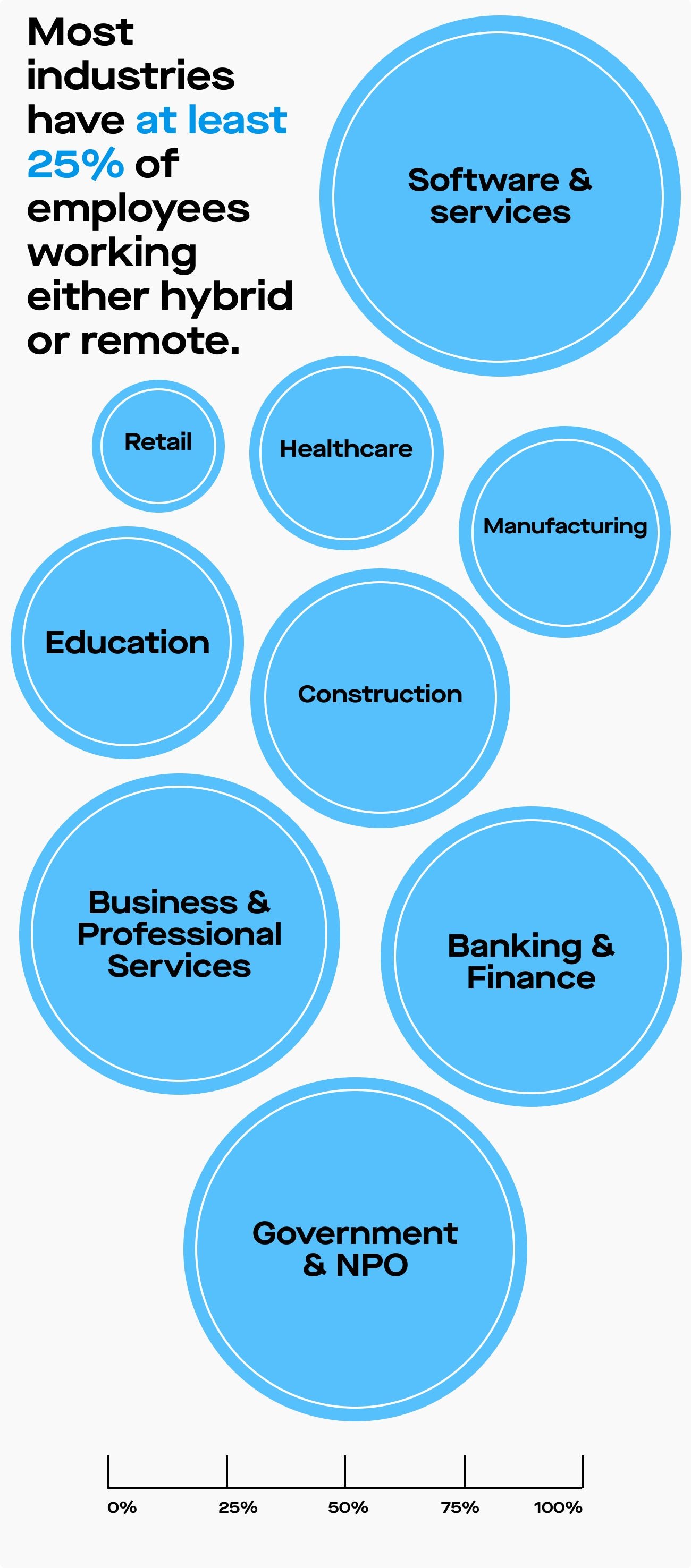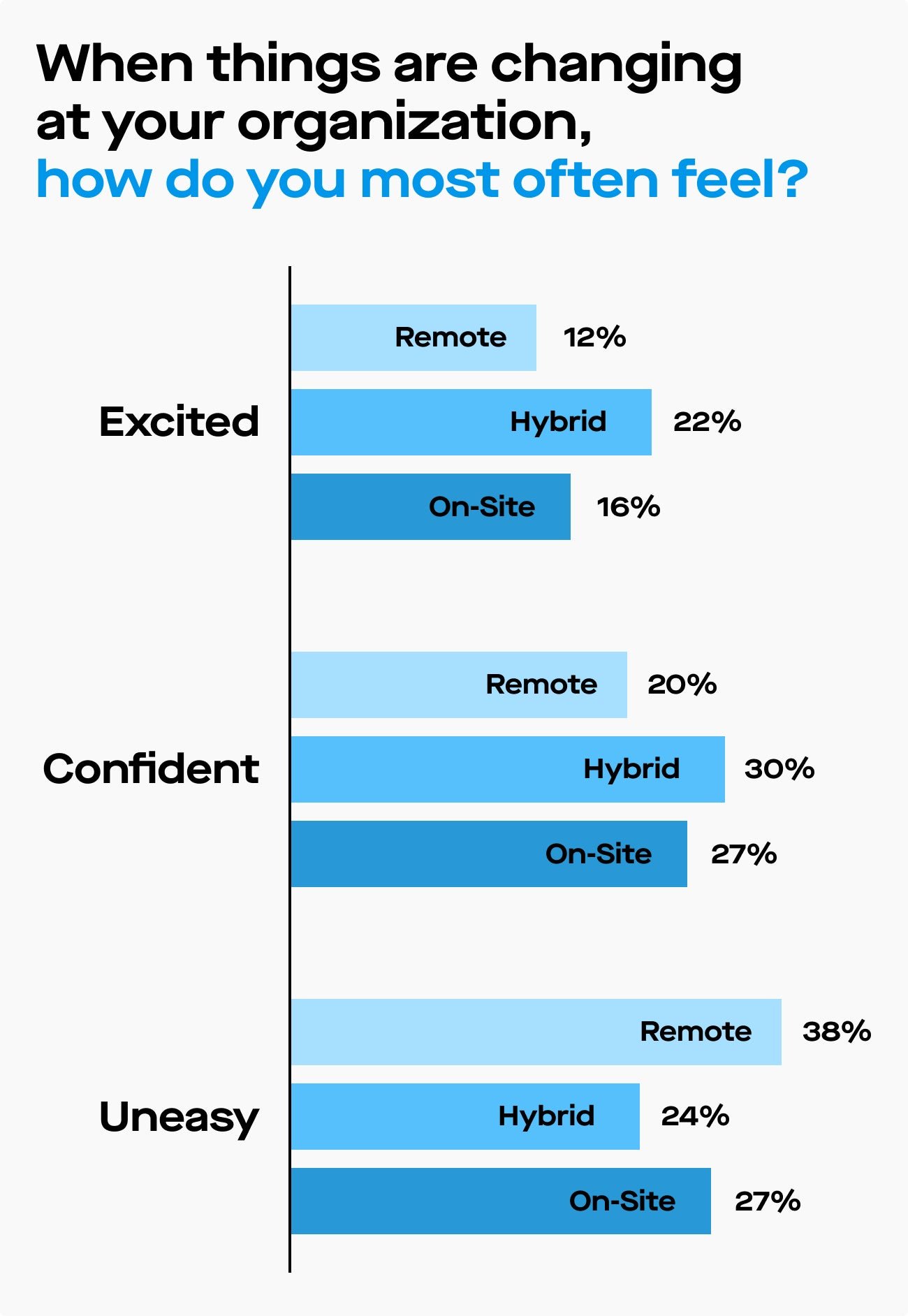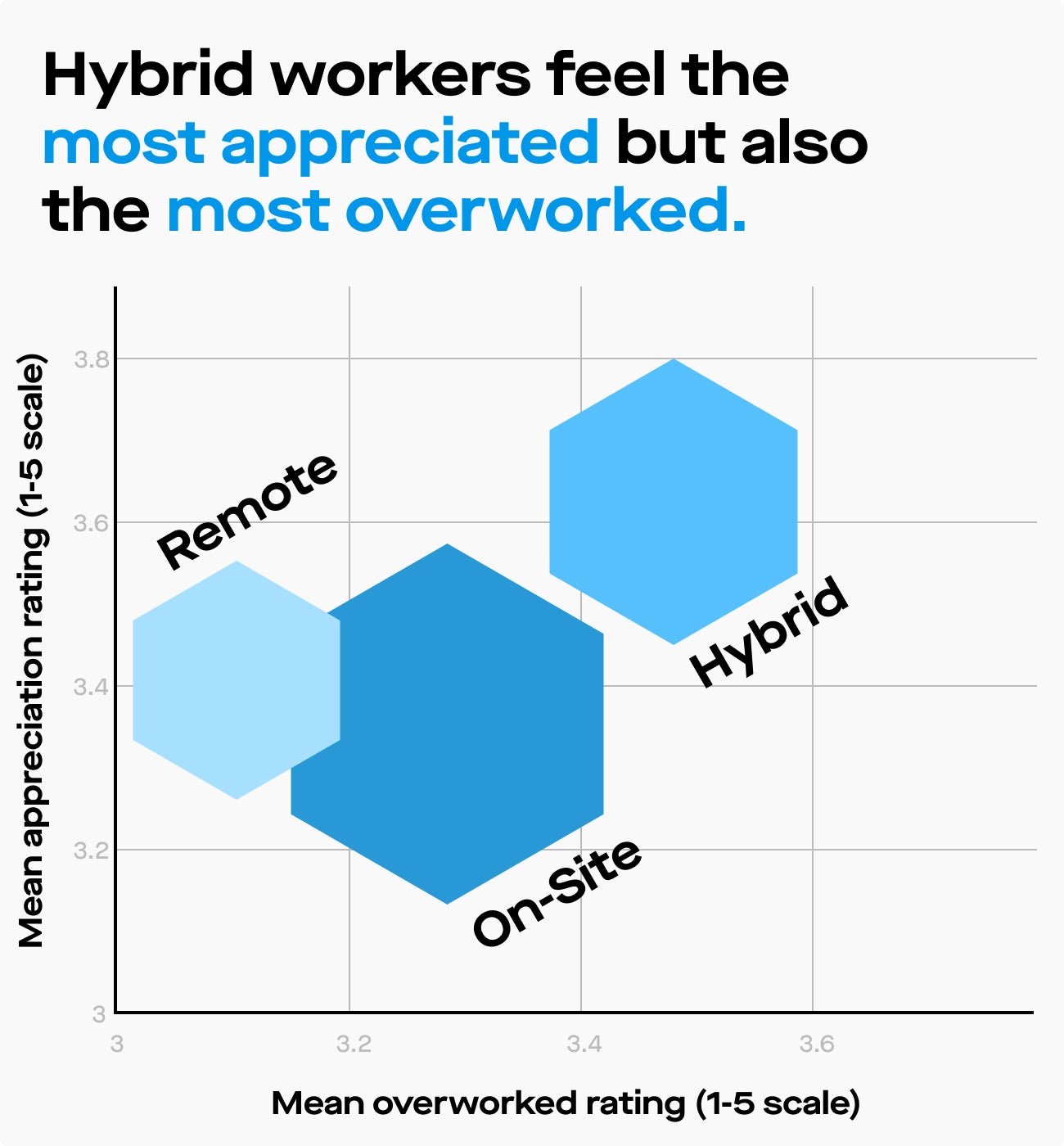The state of work in 2022
The five new truths every business leader should know

If you picture the quintessential full-time remote worker, who are you imagining? We’re willing to bet that the hypothetical person looks more like a Gen Z man grinding away at a start-up than a Gen X woman employed by a major bank.
Suggested Reading
But you’d be wrong.
Related Content
Even though WFH is becoming increasingly common, many company leaders are relying on outdated stereotypes about remote work, and that’s a problem. Because even though virtual commuting has plenty of benefits, it also has its downsides (like that burnout the World Health Organization just warned about).
And with the remote revolution coming for industries you may never have expected, managers need a clearer understanding of who’s Zooming, what they’re struggling with, and how employers can better accommodate them.
So sit back, turn off your laptop camera, and let us debunk five misconceptions about remote work, based off Workhuman’s new survey of more than 2,000 full-time employees, The State of Human Connection at Work.
Myth: Traditionally in-person industries—retail, healthcare, manufacturing, and construction—aren’t affected by the remote work trend.
If you had asked us in 2019 whether something as hands-on as elementary school education could ever be moved online, we probably would’ve said absolutely not, but the global pandemic sure changed our thinking around that.
In fact, 37% of education workers (and 28% of manufacturing workers) say that covid made their work environments more WFH-friendly. Many workers, especially parents, love certain aspects of this shift, but they’re also left feeling burnt out and stressed by it.

Some tasks have to be completed on-site, like assembling a car. But many others, from HR to accounting to logistics, can be achieved anywhere—as long as business leaders set clear expectations and maintain a strong connection between employees.
“Only 6 in 10 workers know what’s expected of them, and it’s worse in hybrid and remote situations,” says Adam Hickman, senior workplace strategist at Gallup. “The forced work-from-home situation has caused bad managers to get worse, highlighting their deficiencies.”
Regardless of your sector, employee feedback should be continuous, from 1:1 check-ins to team recognition moments to project reviews, and ideally culminate in a 360-degree feedback session that considers input from their own POV, their manager’s, their collaborators’, and their direct reports’.
To nurture a company culture that transcends zip codes and time zones, business leaders should also ensure workers feel linked to a larger purpose. For example, a medical device company invites customers to annual meetings to provide testimonies about how a technology saved or improved the patient’s life. Employees who have no day-to-day contact with clients would otherwise never hear these stories and feel bonded by the company’s mission.
Myth: Because they aren’t going into the office, remote employees aren’t as concerned about changes at work.
No commute, no casual wear confined to Fridays, no worries about a sack lunch being stolen from the office fridge: WFH workers should be super chill right now, right?
When it comes to company changes, fully remote employees are, in fact, less excited and less confident than their on-site colleagues. They’re also the most uneasy by a margin of 11 points.

To help workers cope with the dynamic nature of business, whether it’s a new vacation policy, a pivot in strategy, or a change in leadership, you’ve got to increase employee engagement and communication now and be extra cognizant of those who never get the news face-to-face.
Myth: When it comes to praise from their managers, employees who are not in person full-time fall through the cracks.
Though losing the 5-day commute and working occasionally in sweats are admittedly perks, hybrid schedules can sometimes seem like the worst of both worlds—not enough in-person camaraderie of office life and an abundance of annoyances from back-to-back video meetings. But that data shows that that’s not necessarily the case.
Hybrid workers report feeling more appreciated than on-site or fully remote employees though they are teetering on the verge of burnout.

For leaders, this means two things. By being seen on-screen and in-person, hybrid workers have multiple opportunities to receive praise, which is critically important to employees’ overall job satisfaction. Those who have been thanked in the last month are half as likely to look for a new job, more than twice as likely to feel respected at work, and more than three times as likely to see a future at the company, finds Workhuman’s research.
It also emphasizes the importance of fostering connection for hybrid employees. Fifty-nine percent of recently surveyed workers said that “less human connection” is the reason they’re feeling anxious, isolated, and unmotivated, so encourage your team to launch or join an ERG, employee resource group, even if it’s just a Slack channel devoted to interests unrelated to work (#cats, #music, #slowcookerrecipes).
ERGs that meet IRL or online create a network of shared experiences, characteristics, or goals and can help form authentic relationships among employees up and down the organization. Because they’re created by and for your own people, ERGs improve company culture in an organic way.
You can also use a tool like Moodtracker to quickly take your employees’ pulse and get to the heart of organizational issues around connection and capacity. That way, your workers are heard regardless of where they’re Zooming in from and company leaders can see trendlines and take broad actions as opposed to every manager solving for burnout or loneliness alone.
Myth: The pressures of WFH are especially acute for anyone with children.
It’s become cliché: the chatty toddler walking through her mom’s high-stakes video-call presentation. However, what parents are telling us is that WFH is exactly what they want.
In fact, fully remote parents are significantly less stressed and less overworked compared not just to their parenting peers who are on-site and hybrid, but also compared to on-site and hybrid non-parents.

That means that the flexibility of WFH clearly offers huge benefits, especially for caregivers. However, the opposite was true for parents who split the difference between on-site and fully remote. These hybrid workers reported feeling the most overworked and stressed.
Remember: if you’re truly managing for results, outcomes over hours is your mantra.
Myth: After participating in the Great Resignation, workers hired during the past two years are looking to stay put at their new companies.

Cover letters, video interviews, corporate ghosting—switching jobs is no picnic, especially during a pandemic, but that doesn’t mean that your recent hires won’t leave for greener pastures.
Half of workers hired during the pandemic say they plan on looking for a new job within the next 12 months (compared to just a third of those hired before covid), and 69% are willing to return to a previous employer, 13% more than more tenured workers.
What’s one of the easiest solutions to reduce this kind of costly turnover?
A thank you. A manager expressing gratitude is one of the best ways for employees to feel connected to company culture if it’s done right: specific, consistent, merit-driven, unexpected, frequent, and able to be seen by others.
In terms of timing, “Recognition should come as close to the event inspiring it as possible, when the memory of a moment’s action and the result are fresh,” say Eric Mosley and Derek Irvine, authors of Making Work Human.
And even if the gesture is small, the effect will be big. Psychologists have found that the frequency of positive reinforcement is more important than intensity, and consistent employee recognition can reduce turnover by half, according to Mosley and Irvine.
Want to cut turnover, improve engagement, and create a company that lasts? Discover how to recognize, develop, and celebrate your employees in one place with Workhuman.
Methodology: The State of Human Connection at Work survey was directed by Workhuman iQ from November 12-14, 2021. The final sample of the survey was composed of 2,268 randomly selected, fully employed persons in the US, Canada, Ireland, and UK age18 or older. The survey has a margin of error of +/- 2 percentage points and a 95% confidence level.
This article was produced on behalf of Grand Seiko by Quartz Creative and not by the Quartz editorial staff.